French President Macron Hails Courage Of Iranian Protesters

French President Emmanuel Macron has once again expressed support for the protest movement in Iran saying it's important to commend the courage and legitimacy of this fight.

French President Emmanuel Macron has once again expressed support for the protest movement in Iran saying it's important to commend the courage and legitimacy of this fight.
These people "defend our values, our universal principles. When I say 'our', I am not talking about France, they are universal, they are also those of our Charter of the United Nations: equality between women and men, the dignity of every human being," Macron said.
In response to a question raised by Iran International, Macron called for regional stability noting that Tehran must return to “calm and the spirit of cooperation.”
Making the comments during his press conference at the G20 summit in Indonesia, the French president also slammed the Islamic Republic’s bombardment of Iraqi Kurdistan.
Iran launched on Monday a new series of missile and drone strikes against Iraq-based Kurdish opposition groups that Tehran accuses of stoking what it calls the "riots" at home.
The United States and the United Nations censured the attacks in which at least one person was killed and several other were injured.
Elsewhere in his remarks, he condemned the “hostage-taking” approach of the Islamic Republic, warning that Tehran must respect the rights of French nationals.
At least seven French nationals are held hostage by the totalitarian rulers of Iran and Paris has for several times urged the authorities in Tehran to release them.
Tehran claims the French detainees have been locked up due to their espionage activities; something that France has categorically rejected.

Amnesty International says Iran’s regime is seeking the death penalty for at least 21 people in “sham trials” designed to intimidate those who take part in antigovernment protests.
In a statement on Wednesday, Amnesty added that these trials are to deter other people to join the movement that began with the death of Mahsa Amini in September in police custody.
“The Iranian authorities must immediately quash all death sentences, refrain from seeking the imposition of the death penalty and drop all charges against those arrested in connection with their peaceful participation in protests. The death penalty is the ultimate cruel, inhuman and degrading punishment, its abhorrent nature further compounded by a fundamentally flawed criminal trials devoid of transparency or independence,” said Diana Eltahawy, Amnesty International’s Deputy Director for the Middle East and North Africa.
Amnesty also noted in its statement that since November 13, the Iranian officials have announced, in separate statements, that Revolutionary Courts in Tehran have sentenced five unnamed individuals to death for “enmity against God” and “corruption on earth”. At least 12 other people including a woman are also facing capital charges in connection with the protests.
The international body urged all governments with embassies in Iran to immediately send high level observers to all ongoing trials where defendants are at risk of being sentenced to death. The Iranian authorities have said such trials will be public.
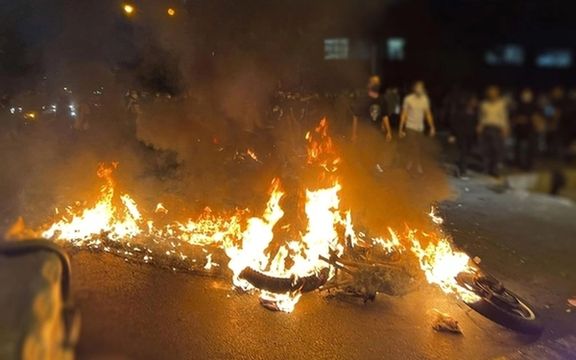
Iran’s foreign minister Thursday accused Israel and Western intelligence agencies of trying to start a civil war and divide Iran, as protests raged across the country.
"Various security services, Israel and some Western politicians who have made plans for civil war, destruction and the disintegration of Iran, should know that Iran is not Libya or Sudan," Hossein Amir-Abdollahian tweeted, adding that Iranians would not fall for such plans.
Protests intensified this week when anonymous activists called for three days of demonstrations to commemorate the death of at least 1,500 people who were killed in November 2019 in nationwide protests. The overwhelming public response to their call on Tuesday and Wednesday and the death of more people resulted in a new announcement to extend the demonstration until November 21.
State media presented the death of seven people during protests in the southwestern city of Izeh on Wednesday as a “terrorist attack” and drummed up the narrative that antigovernment protests were being inflamed and partly controlled by “enemies”.
Iranian officials have been insisting on this narrative for weeks, as popular protests that began with the killing of Mahsa Amini in ‘hijab police’ custody have turned into a full-fledged anti-regime movement.

So far, the authorities have not presented any tangible evidence except detaining some foreigners, possibly dual nationals, claiming they were foreign intelligence agents. The government has not revealed any names, but France acknowledged last week that two more of its citizens were arrested in Iran.
What happened in Izeh is not clear. Armed men opened fire on people in the streets, killing seven adults and children. The government says “terrorists” riding on motorcycles opened fire, but it could well have been plainclothes agents and vigilantes the government uses against protesters. They often appear on motorcycles, beat people in the streets and shoot at protesters.
Reports say at least 8 people were killed in Esfahan Province on November 15 and 16, and government media alleges that these were also attacks by terrorists, although Esfahan is in the center of the country and far from regions where infiltration would be relatively easy.
Fars news website affiliated with the Revolutionary Guard squarely blamed “separatists” on Thursday, as a last-ditch argument the Islamic Republic has used before to justify violence against protesters and spread fear among Iranians who are overwhelmingly committed to the territorial integrity of the country.
So far, security forces have killed around 350 people and detained up to 15,000 without being able to control the uprising. In fat, protests this week have been the most intense since the uprising began in September.
In fact, people of various ethnicities and religious backgrounds have been remarkably united in the past two months, from the Sunni majority in Zahedan, close to the Pakistani border to the capital Tehran and Kurdish and Arab regions in the west and southwest. Protesters routinely chant slogans such as, “From Zahedan to Tehran, My life for Iran.”
The killing of Mahsa Amini, who was a Kurdish woman, triggered the nationwide protests because most Iranians regard all ethnic groups as part of a diverse country.
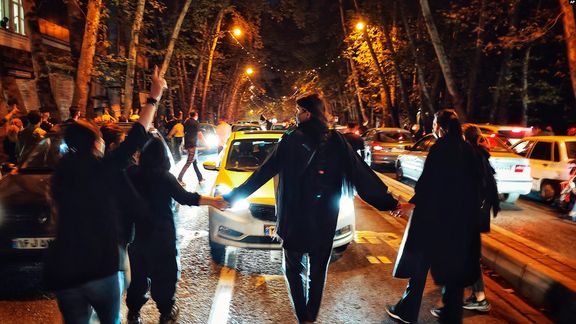
Numerous businesses and workers were on strike in Iran as people poured into streets on Wednesday, the second day of three days of rallies to mark the anniversary of November 2019 bloody protests.
Answering calls by grassroot groups for nationwide protests on November 15, 16, and 17 -- in honor of over 1,500 protesters killed by security forces three years ago– many cities across Iran were scenes of protests, with reports of clashes and casualties from several cities. Wednesday was one of the bloodiest days of the protests with unconfirmed reports saying several people were killed in different bouts of violence in Izeh in Khuzestan province, Bukan in West Azarbaijan province, and Esfahan.
Clashes erupted early in the morning in the Kurdish-majority city of Kamyaran after the bereaved family of a protester killed by security forces gathered outside the hospital to get his body but government agents opened fire at them.
The protester, identified as Foad Mohammadi, was a 38-year-old father of two. According to social media reports, one person was killed and several were injured in clashes that has spread all over the city following his funeral service.
In Saqqez, another Kurdish city and hometown of Mahsa Amini, whose death in police custody sparked the current wave of protests, security forces were reportedly trying to take the body of a 16-year-old protester, identified as Danial Paybandi, from the hospital, but people gathered there to stop them, leading to clashes. The Islamic Republic’s agents have abducted the bodies of dead protesters reportedly on several occasions since the protests began in mid-September both to threaten their families against holding public funerals – that tend to morph into demonstrations – and also to bury them in unknown places in case their families do not give in to pressures and seek public ceremonies.
Until around noon, students also held fresh rounds of rallies at several university campuses across the country and chanted slogans against the Islamic Republic. Hours into the evening, demonstrations started to take place in various cities with many pocket protest gatherings in the capital Tehran and neighboring cities as well as other metropolitans.
People in many shopping centers and subway stations staged flash mob protests and chanted slogans. Security forces responded by violent crackdown using tear gas and rubber bullets. Some of the slogans have changed in par with the clampdown, with people now chanting that “fire should be answered with fire.”
As the Internet is almost shut down in many cities, footage from the Wednesday protests is trickling online showing numerous bouts of protests in different neighborhoods of the capital as well as in other cities.
In some neighborhoods of Tehran, such as Nazi Abad, people were dancing on streets while in some others, such as Shahrak-e Gharb and Ekbatan districts, people set fire to trash cans and blocked the streets to stop the movement of security forces. In some neighborhoods, security forces were reportedly shooting at people.
Protesters in the cities of Tabriz, in East Azarbaijan province, Boukan (Bukan) in West Azarbaijan, Hafshejan in Chaharmahal and Bakhtiari, Doroud in Lorestan, Mashhad in Khorasan Razavi, Qaem Shahr and Behshahr in Mazandaran, Bandar-e Lengeh in Hormozgan, and Kerman, Ilam, and Hamedan as well as many others also held rallies, chanting slogans against the regime and its crackdown on protesters.
Gunshots could be heard in several social media videos. Elsewhere, security forces were seen violently arresting protesters. In Doroud people pulled down the flag of the Islamic Republic and in Boukan a huge gathering was held outside the governor’s office. The office of Supreme Leader’s representee in the city of Abdanan in the Ilam province was reportedly exploded.
According to reports, the electricity was also out in the city of Behshahr and water is also cut off in the city of Mahabad. In Khuzestan, people on social media suggest that protesters are also shooting back at the security forces.
One of the main hotspots Wednesday was the city of Izeh in the south-western Khuzestan province, where several people have been killed so far and clashes still continues into the night. People on social media say security forces have been on a killing spree in the city but Iran’s state media has claimed a terrorist attack.
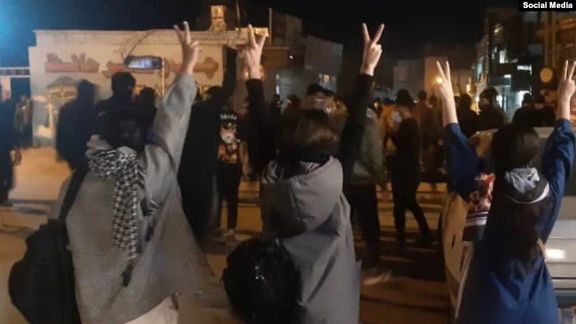
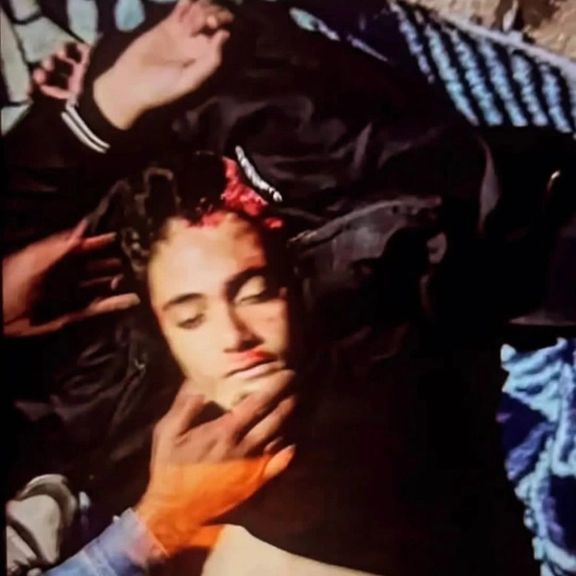
In the deadly incident, in which at least five people have been killed, a gunman with an AK-47 mounted on a motorcycle opened fire at protesters, injuring a large number of them. Fars news agency, affiliated with the Revolutionary Guard, claims that it was a terrorist attack, although many government agents ride on motorcycles carrying guns. The agency says that the city’s seminary has been also set on fire.
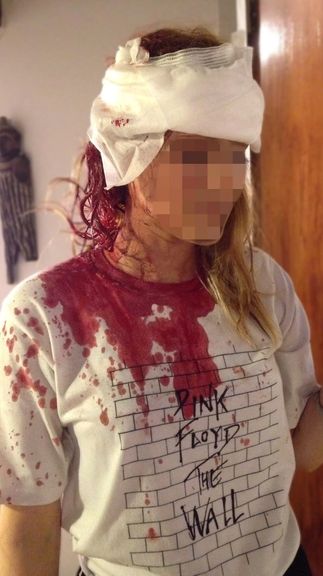

Employees of one of Iran’s largest steel company have joined many other steel and oil workers going on strike in solidarity with the current wave of protests.
Wednesday was the second day of strikes by the workers of Esfahan Steel Company, directly controlled by the country’s Ministry of Industries and Mines, but authorities deny the reports, saying the firm is functioning as normal. Esfahan Steel Company – or Zob Ahan -- is Iran's third largest steel producer and is the largest factory producing steel for construction.

Videos and photos on social media on Tuesday showed a large crowd of workers holding a gathering at the premises of the firm, but the Iranian government insists that there is no strike, claiming that the photos of the gathering were taken from an angle to make viewers believe they are holding a protest.
The head of the company’s public relations said that Esfahan Steel Company has about 14,000 employees, and such crowds of workers are normal during shift changes, and there have been no gatherings.
The state broadcaster even aired a video from the company, showing employees at work but people on social media say the video was recorded a few years ago and many of the workers in the video have retired.
The strikes in the country’s steel companies are important because in addition to being one of the most important materials for building and infrastructure, steel is the enabler of a wide range of manufacturing activities, widely being used in other sectors. Iranian steel exports are also an important source of revenues in hard currency.
People on social media have been calling for strikes in companies that provide raw materials for smaller businesses and merchants at Iran’s traditional markets, arguing that if they join the protests, the Islamic Republic will be crippled. Activists say if the guilds and merchants do not go on strike, they will boycott their goods and products.
Strikes are also costly in companies producing oil, gas and petrochemicals, key revenue generators for the government that directly or indirectly controls most of big businesses.
Last week, reports said employees of Iran’s Oil Ministry at dozens of oil rigs in the south had gone on strike to show anger at government mismanagement and unfair wages. According to civil rights activist, Atena Daemi, the workers of at least 37 rigs in a symbolic action refused to receive food at canteens.
Workers of several companies -- such as South Pars Gas-Condensate field, Bushehr Petrochemical Company and Hengam Petrochemical Company, Abadan Petrochemical company and refinery, Mahshahr’s refinery and Pipe Mill Plant, and Neyriz Ghadir Steel Complex as well as others in oil-producing regions on the Persian Gulf coast-- have been on strikes in solidarity with the protests across Iran, ignited by the death in custody of 22-year-old Mahsa Amini.
Hundreds of striking employees have been arrested in the past few weeks while many are threatened with being fired or replaced by other workers, notably Chinese workers, if they do not break their strikes.
Wednesday was also the second day of a three-day protest to mark the third anniversary of ‘Bloody November’ in 2019, when the government killed at least 1,500 protesters.

Google has removed three Iranian native messengers and two smart transportation applications controlled by the government from its digital distribution service Google Play.
Iranian website Digiato announced on Wednesday that the applications are Snap, TAPSI, Soroush, Bale, and iGap, and their accounts have been removed from Google Play.
Digiato claimed that based on its inquiries it has found out the applications are removed because of the sanctions on Iran.
The removal of Iranian applications from Apple and Google Store platforms is not a new thing and dates to 2017. Due to US sanctions against the authoritarian regime, Apple widely removed Iranian applications from the Apple Store.
Iranian regime has shut down two popular applications WhatsApp and Instagram since the beginning of popular antigovernment protests in September to restrict the free circulation of information about events taking place around the country.
Telegram, Twitter, and YouTube are also banned by the Iranian government while the top officials of the country have access to these platforms to spread their propaganda.
The clerical rulers say people are only entitled to use home-grown application like Soroush, iGap, and Bale which are now banned by Google.
Recently, social activists have launched a campaign to put pressure on Twitter to remove the account of Iran’s Supreme Leader Ali Khamenei who is ultimately responsible for human rights violations and the of killing the protesters.